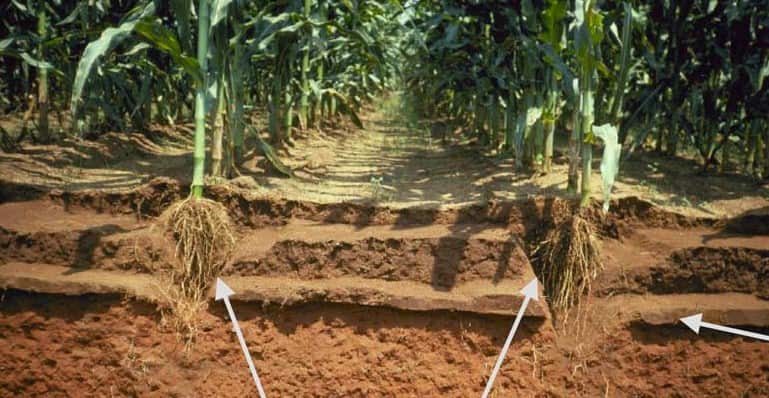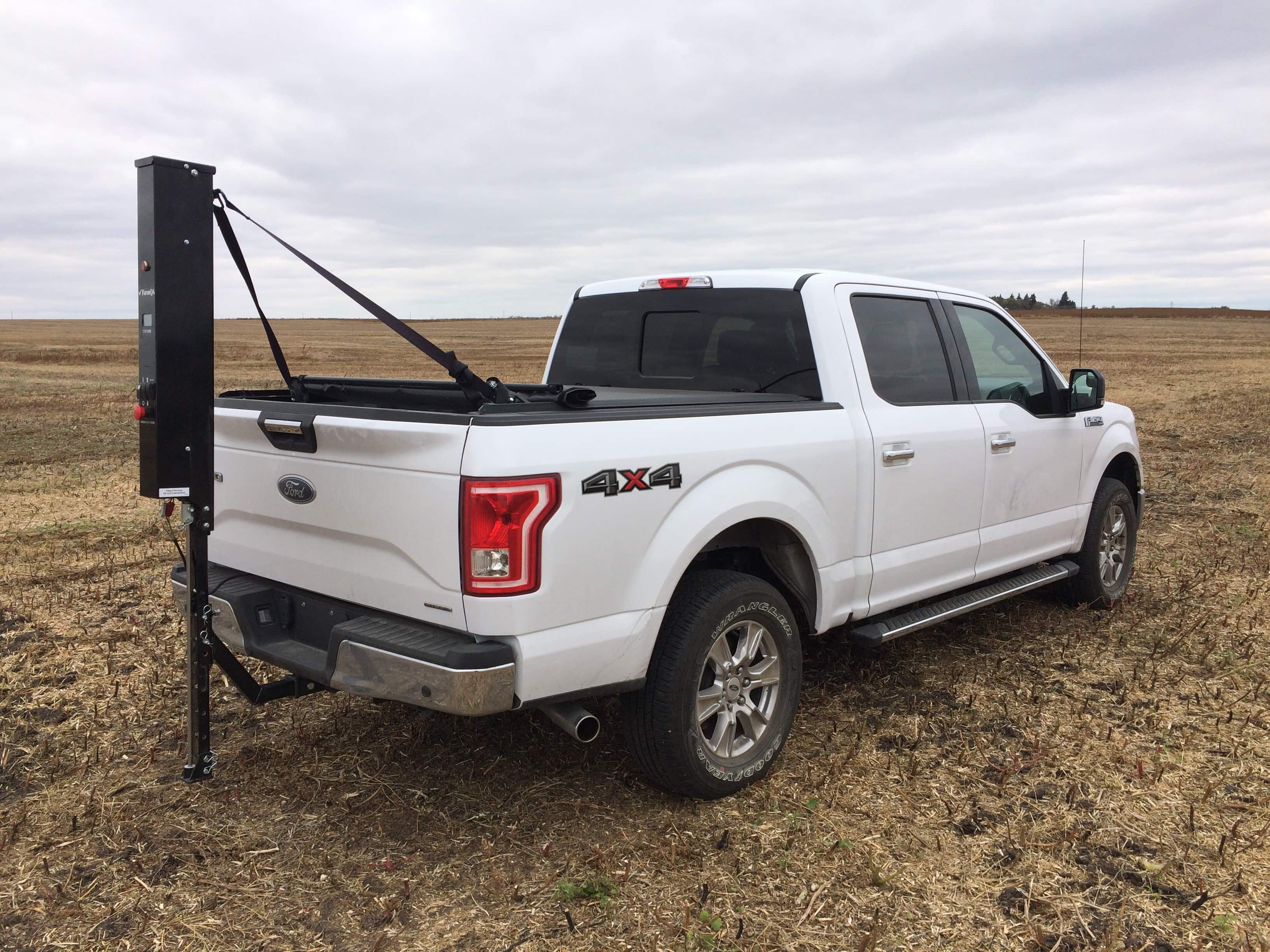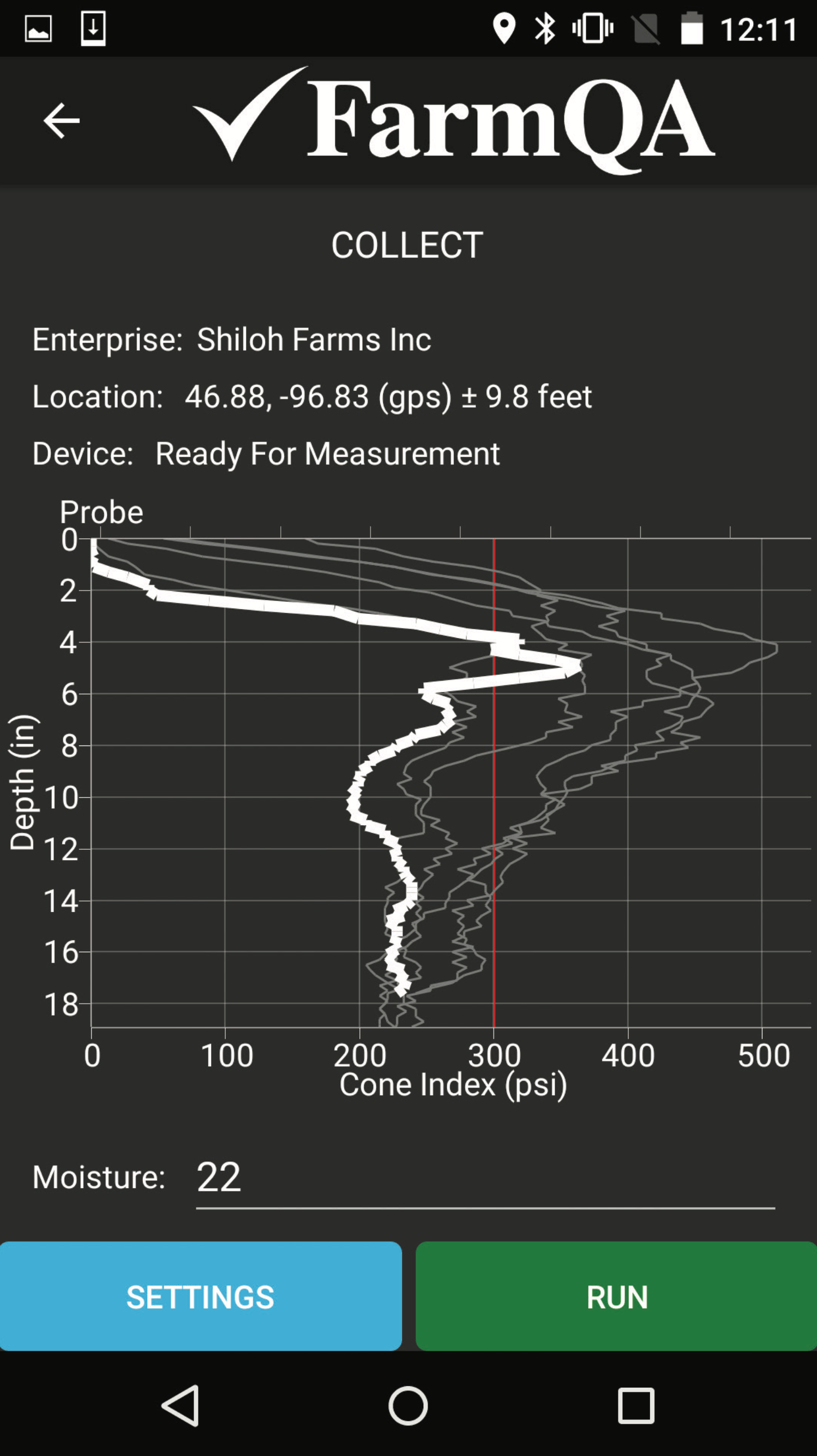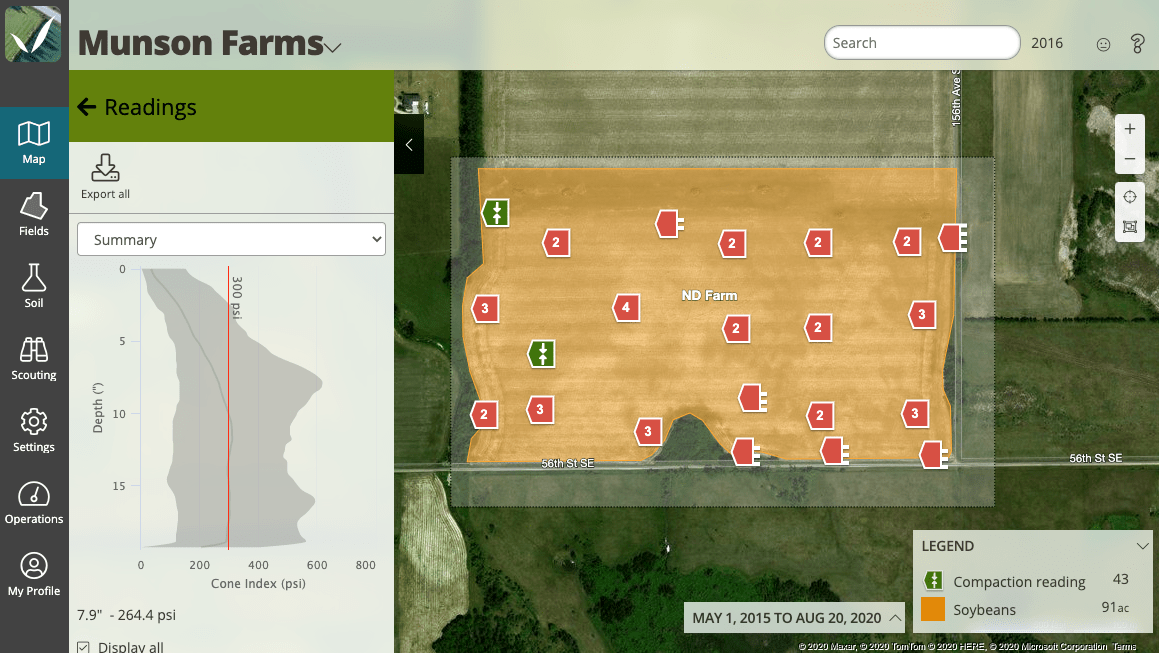Compaction—it’s a problem. See how FarmQA can help any agronomist measure and and manage soil compaction.

Compaction—it’s a problem. Compaction occurs when soil particles get pressed together, reducing the pore space and increasing the soil density. This results in reduced root growth, water infiltration, and poor drainage. Compaction can be caused by wheel tracks, plow or tillage pans, or deep compaction, which can be natural. Today’s equipment is getting bigger and bigger, which further amplifies compaction issues.
Putting Numbers to the Problem
Iowa State University research on compaction has shown compaction can reduce yields anywhere from 10-50%. Yield reduction, with the cost of deep ripping averaging $12.50/acres , can have a significant financial impact. With that said, compaction is never consistent across an entire field, so it shouldn’t be managed in the same way. How do you know if you have a compaction problem and what can be done if you do? Traditionally, if fields are poorly producing, agronomists rule out issues, such as nutrient testing, moisture assessment, weather data, seed selection, etc. Compaction often has been a catch-all for poorly producing fields, especially if all other issues were ruled out because there wasn’t a good way to quantify the problem.
A Tool for Mapping Field Compaction
That’s where the Amity/FarmQA CTS-1000 comes in. It’s a digital tool for the agronomists’ toolbelt to troubleshoot field issues by mapping compaction across fields. The CTS 1000 is an electrically driven penetrometer with consistent downforce that cycles down 24 inches. A mobile app pairs via Bluetooth to the CTS-1000, allowing for in-cab data collection while converting the voltage draw of the device to PSI every tenth of an inch. It also captures GPS location per cycle, allowing for repeatable testing and field mapping.


The CTS-1000 mounts to the receiver hitch of a UTV or pickup truck and is powered with a standalone battery or the vehicle’s battery. It can be mounted on the same vehicle as a soil sampling rig for efficient in-field collection. The cycle time is 35 seconds and allows an operator to collect a soil sample and bag it while the CTS 1000 is cycling.
Data collection happens in the FarmQA Compaction app, as seen in to the right. The sample depth is on the Y- axis, with PSI on the X-axis.
Below you will see the visual representation of the data across an entire field within FarmQA Controller. A 300 PSI line is outlined within FarmQA, which is a threshold where root growth is limited.

Making Sense of the Data
First of all, the data outlines the severity of the compaction issue in a given field and provides insights into the potential yield loss. This can drive operational changes, as the best solution for combatting compaction is to prevent it. However, that is easier said than done. For example, a wet spring or fall likely means you have equipment in fields during the worst compaction- causing conditions. But the economic impacts of not getting to the field can outweigh the financial impact of not getting into the field.
If you're unable to prevent compaction, consider additional remedies. For example, improving soil structure over the long term using solutions like deep-rooted cover crops or no-till can help. Additionally, tillage and deep-ripping may be options. For both use cases, the CTS 1000 data can be used: first, to quantify the benefit of biological controls through repeatable testing; and second, to map out where deep-ripping should be done and at what depths. Ripping is costly and can disrupt soil structure, so doing it precisely is key.
| Percentage of measuring points having cone index > 300 psi in top 15 inches | Compaction rating | Subsoiling recommended |
| <30 | Little-none | No |
| 30-50 | Slight | No |
| 50-75 | Moderate | Yes |
| >75 | Severe | Yes |
| Adapted from: Lloyd Murdock, Tim Gray, Freddie Higgins, and Ken Wells, 1995. Soil Compaction in Kentucky. Cooperative Extension Service, University of Kentucky, AGR-161. | ||
Better Grower Service, Better Value
In the end, we see the CTS 1000 as a tool for the agronomists to better serve growers. This can be done through reports and data visualization within the FarmQA software platform alongside the other critical data layers we provide. Compaction is an issue, and quantifying it is the first step to resolution. Contact FarmQA for more details on the CTS 1000.
Learn more





